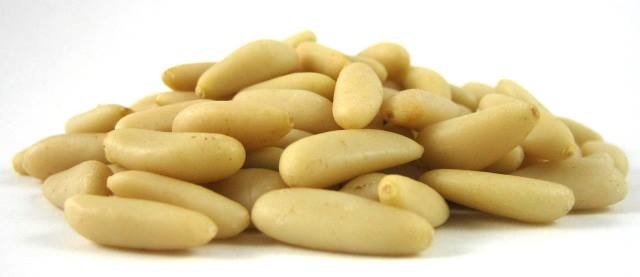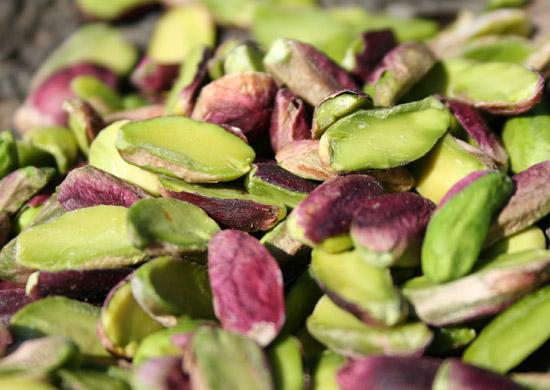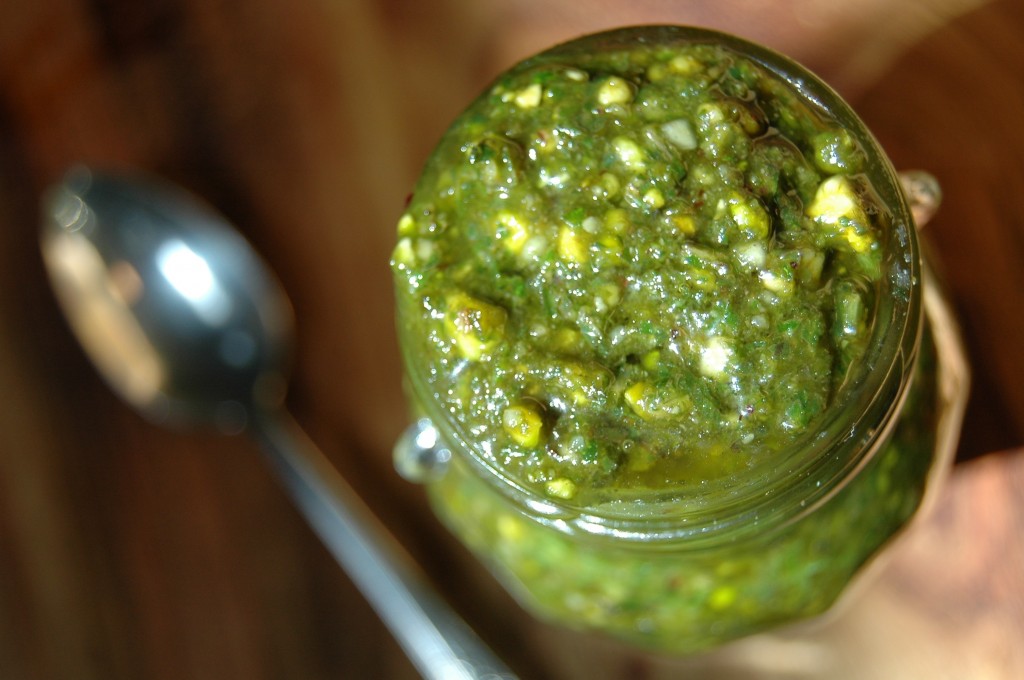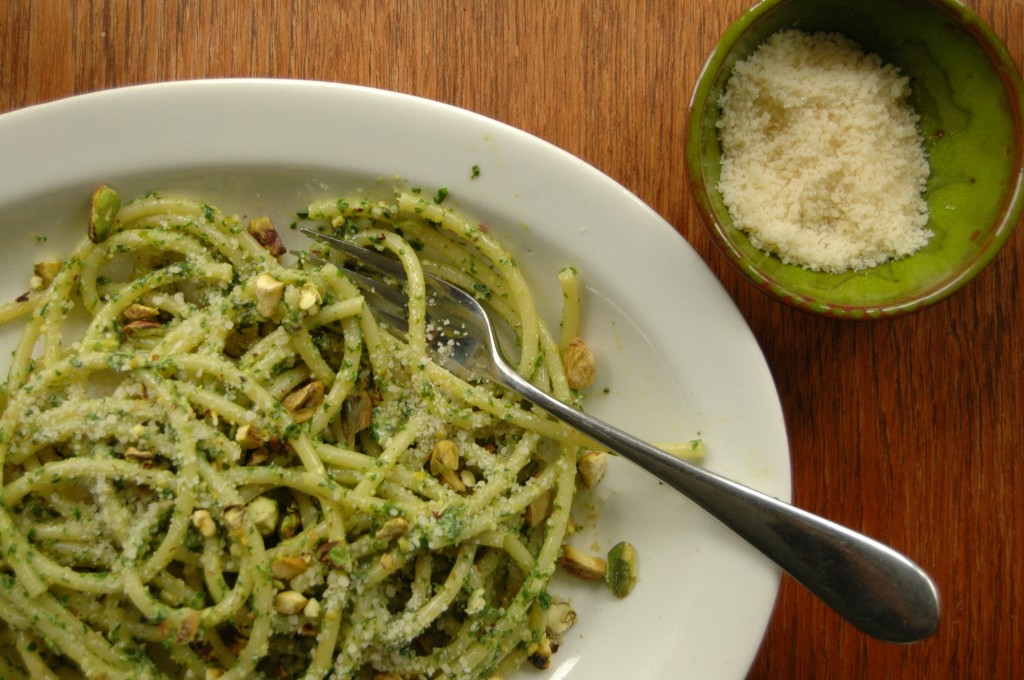If making basil pesto is a rite of summer for you, you’ll want to check out my most recent stories on Zester Daily and NPR radio about the disappearing pine nut and substituting pistachios for pesto instead. As our planet warms, we’re losing our pine forests. Everyone I spoke to, from the American pine nut gatherers in the southwest dustbowl, to the pesto makers in Genoa who have relied on the Mediterranean fir forests for centuries, said the same thing: the nut-bearing conifers are an endangered species.

The disappearing Pinus pinea, nuts from the Mediterranean parasol pine. Photo courtesy of www.gustiamo.com.
It was a tough story to digest, but digest it I did. Because I write about food rather than politics, I can offer a promising subtext, When Life Hands You Plagues, Make Pistachio Pesto.

Bronte pistachios from the slopes of Mount Etna in Sicily. Photo courtesy of www.gustiamo.com
If you’ve read about my earlier adventures in Sicily with pistachio pesto, and tried the recipe, have a look at the new recipe in Zester Daily. I’ve revised it for a more brightly colored, but equally delicious version (in short, blanch and shock the basil before making the pesto).
Have a listen and then go make yourself some pasta with pistachio pesto for a little bit of comfort.



 Follow
Follow
 email
email
This is so sad! Sign of the times I guess…have to try with pistachios, it’s on my things to try this summer along with the method of blanching & shocking the basil, which I read about a few months back. Thanks for the reminder. I have, in the past, when I cannot find Mediterranean pine nuts, used toasted, slivered almonds. We usually get pine nuts in our markets from China and I find they have an unpleasant aftertaste.
The photo of the pesto bucatini looks so mouthwatering, I am headed to the backyard basil patch as we speak!
As I say in my article in Zester Daily, “Never Mind About the Pine Nut Shortage,” 99% of the pine nuts sold in the U.S. are from China. The Asian pine nuts are from a different species of conifer. Besides that, several years ago, Asian producers mixed inedible Asian pine nuts together with the edible Asian species, causing people who bought the tainted shipments a mouth disease (essentially, a fungus) that makes anything they ate horribly bitter. The fungus goes away eventually, but from what I have read, the effect was horribly vile-tasting and affected people really suffered. It sounds like whatever you ate was only mildly affected. You were lucky.